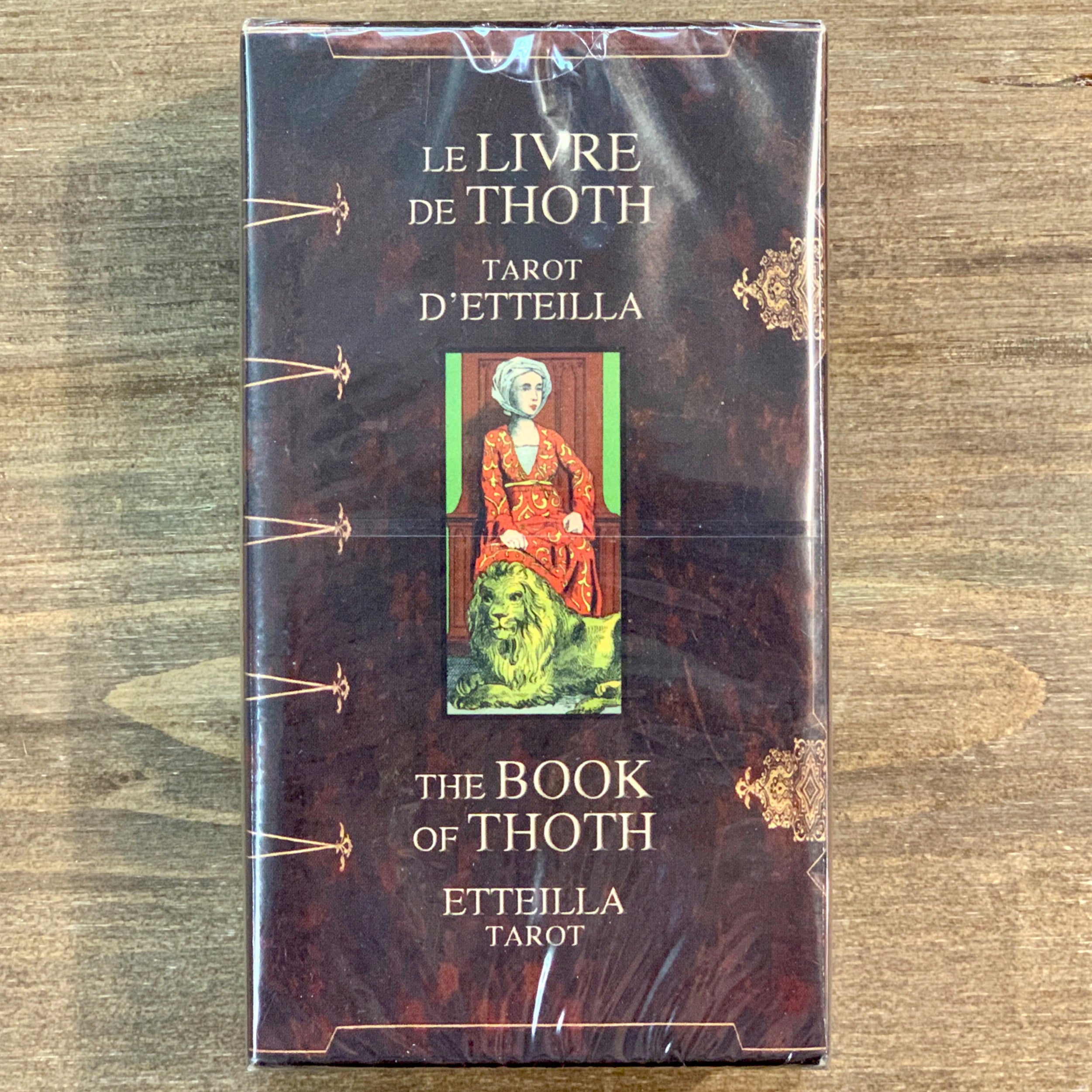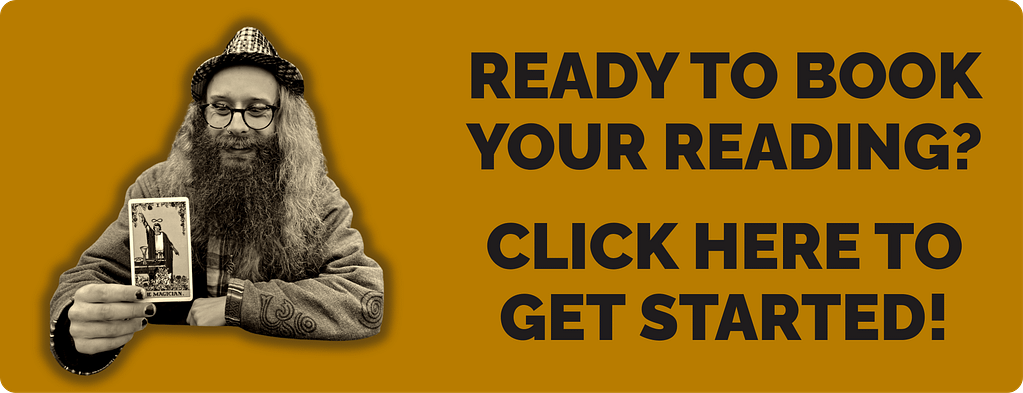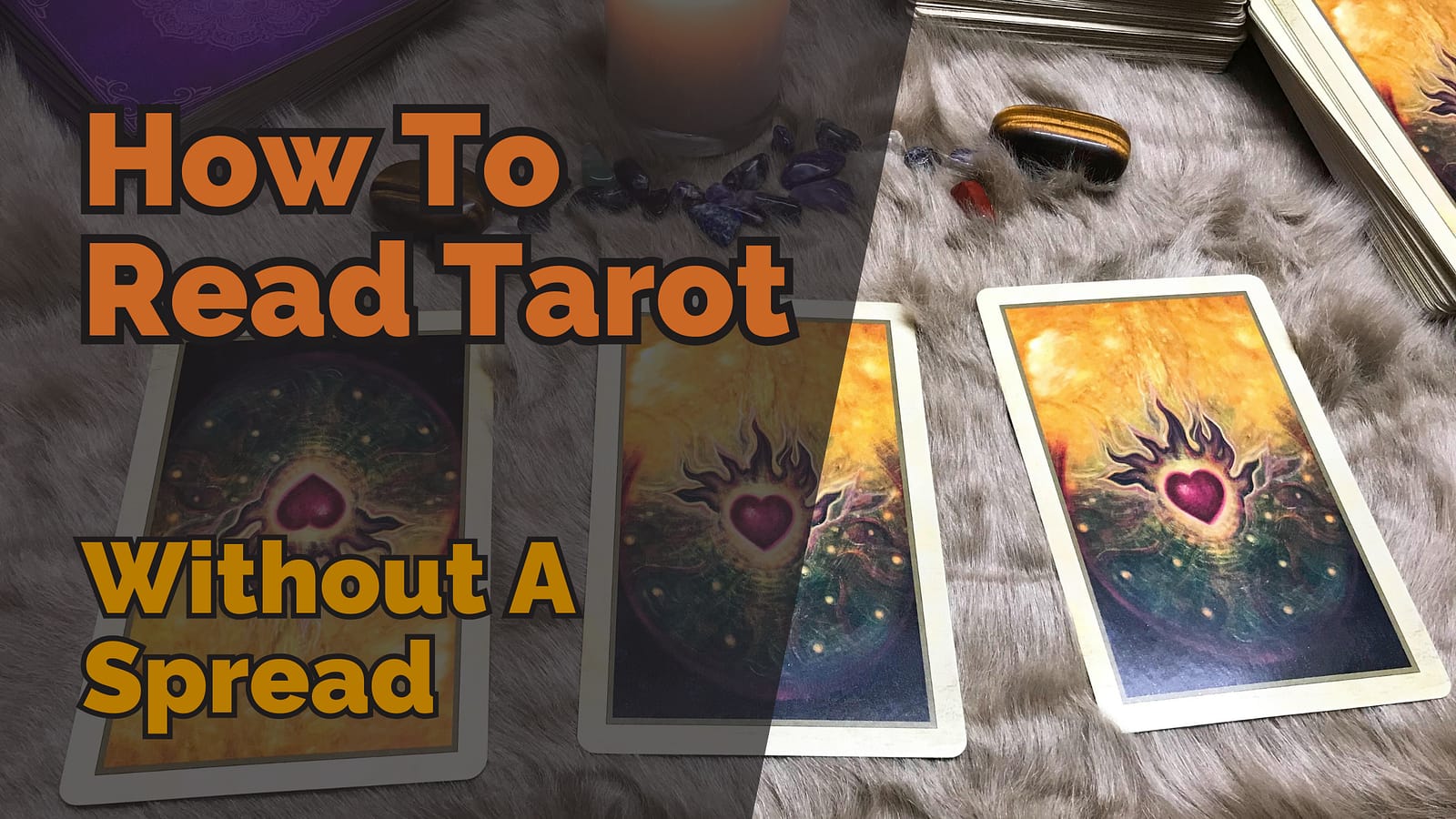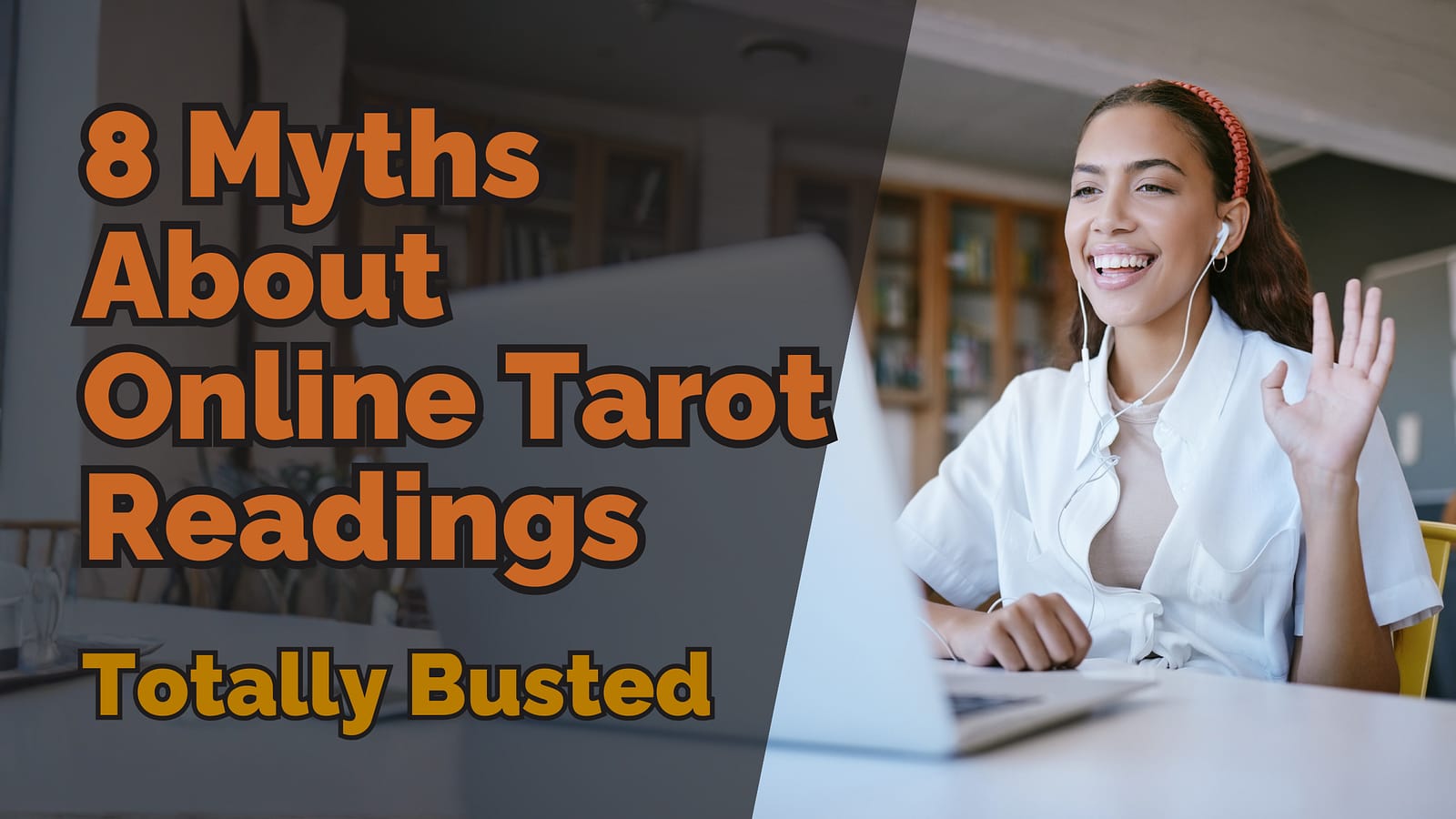
Table of Contents
This is the third post in my Decks That Changed Tarot series. If the Visconti-Sforza gave us elegance and heritage, and the Marseille deck gave us folk structure and symbolism, then the Etteilla tarot deck gave us something entirely different. This is where tarot stopped being a game and started to become a divination tool. Not just a deck you could read with, but one designed for reading.
Before Etteilla, tarot was something you played. After Etteilla, tarot was something you read. Seriously. Spiritually. Systemically. He was the first person to publish a tarot deck designed from scratch for the purpose of divination, and in doing so, he helped kick-start an entirely new way of relating to the cards.
The Etteilla tarot is messy, weird, and a bit chaotic. And that’s kind of the point. It’s full of astrological symbols, alchemical references, and borrowed Egyptian motifs. The meanings are printed directly on the cards, both upright and reversed, and the whole system feels more like cracking a code than telling a story.
Even though I’ve never used it (and probably never will), I admire it for what it sparked. It’s not just part of tarot history. It’s one of the reasons tarot exists as we know it.
Tarot Gets Esoteric
Court de Gébelin and the Egyptian Myth
In the late 18th century, Antoine Court de Gébelin, a French clergyman and Freemason, suggested in his multi-volume work Le Monde Primitif that tarot contained hidden wisdom from ancient Egypt. He believed that tarot was a remnant of a mystical book that had been preserved over the centuries, and that each card held profound esoteric meanings. This interpretation shifted the perspective on tarot from being a game to a tool for spiritual exploration.
His ideas weren’t based on any actual evidence. They were rooted in Enlightenment-era obsessions with ancient civilisations and secret wisdom. But they caught on. And they gave tarot an origin story, even if it was completely invented.
Who Was Jean-Baptiste Alliette?

A few years after Court de Gébelin’s theories took hold, a Parisian hairdresser named Jean-Baptiste Alliette started writing about cartomancy. He reversed his surname to publish under the name Etteilla. While Court de Gébelin laid the ideological groundwork, Etteilla was the one who actually built something out of it. He didn’t just theorise. He created.
Etteilla was the first to popularise tarot explicitly as a tool for fortune-telling. He published Manière de se récréer avec le jeu de cartes nommées tarots (How to Entertain Yourself With the Deck of Cards Called Tarot) and later, Cahier de Thot(Notebook of Thoth), where he connected tarot with the Book of Thoth, linking it to Egyptian mythology.
The First Esoteric Tarot Deck
Designing the Grand Etteilla
Etteilla designed a deck he called the Book of Thoth, now commonly referred to as the Grand Etteilla tarot deck. It wasn’t an adaptation of the Marseille or Visconti-Sforza decks. It was something completely new, explicitly created for divination.
The structure of the deck was radically different. The Major Arcana began with a card called Chaos, which Etteilla saw as the beginning of all things. Many of the other trump cards were renamed or reimagined, reflecting his philosophical system. The minors included traditional suits (cups, swords, coins, and batons), but also featured additional cards that had no precedent in earlier decks. Some of the pip cards even received entirely new imagery and roles.
The Grand Etteilla tarot introduced astrology, alchemy, and Egyptian symbology into the cards. The imagery was rich and esoteric, full of coded meaning. Etteilla also included upright and reversed meanings printed directly on the cards. This wasn’t a companion book. The interpretations were right there, baked into the design.
How to Read Etteilla Tarot
The Etteilla tarot system is complex. It uses familiar suits, but the structure and meaning of the cards don’t map neatly onto other systems. Etteilla’s own writings, especially the Cahier de Thot, outlined the symbolism and correspondences he assigned to each card, drawing from astrology, numerology, the four elements, and classical philosophy.
He provided a rigid interpretive structure. Each card had fixed meanings, and the spread placements carried their own significance too. If you’re used to intuitive reading or storytelling approaches, this deck feels very different. It’s formulaic. Structured. Designed to guide the reader through a specific esoteric lens. It’s not something I’d reach for personally, but that doesn’t make it any less important.
Reading in Reverse: Etteilla’s Innovation

One of Etteilla’s most distinctive contributions was the formal introduction of reversed card meanings. While reversals are commonly used today, Etteilla was the first to bake them into the actual design of the deck. Each card included both an upright and a reversed interpretation, printed directly on the card face.
This wasn’t just a novel feature. It reflected Etteilla’s desire for tarot to function as a precise and consistent system. He didn’t want ambiguity. He wanted the cards to speak clearly, whether they landed upright or upside down.
This innovation laid the foundation for the way many modern readers work with reversals. Whether or not you use them, that structural distinction started here. And it’s another reason the Etteilla tarot deck still matters.
Legacy and Influence
Etteilla Tarot Meanings and Methods
Etteilla prioritised assigned meanings over intuition. Every card had a job, a place, a meaning that didn’t shift much depending on context. His approach leaned heavily on systems: four humours, astrology, numerology, and later Kabbalah. That methodical approach would influence the Golden Dawn, the Rider-Waite-Smith deck, and eventually the Thoth deck created by Crowley and Harris.
His decks and books helped turn tarot into a metaphysical language. They gave later esoteric schools something to build from.
Etteilla also founded a society, the Société des Interprètes du Livre de Thot, to continue his work and teach others how to use the deck. His followers kept the tradition alive through reprints, adaptations, and further writings. While the system eventually fell out of widespread use, its bones live on in modern esoteric tarot.
Etteilla’s Book of Thoth and Its Legacy

It’s easy to confuse Etteilla’s deck with Aleister Crowley’s Thoth tarot, but they’re not the same. Etteilla’s so-called Book of Thoth came a century earlier. While Crowley used the name for his own project, Etteilla’s version was the first to link tarot explicitly with Egyptian magic and occult philosophy.
Etteilla’s writings weren’t always consistent, but they provided one of the earliest frameworks for reading tarot symbolically and systematically. Cahier de Thot outlined card meanings, astrological connections, card orders, and techniques for drawing and interpreting spreads. Without them, much of what we consider standard today might not exist.
Critique and Complexity
Why I Don’t Read with the Etteilla
Look, I have a lot of respect for what this deck represents. But it’s not one I read with. The system is too rigid for how I work. There’s not a lot of room for the client’s story or intuitive nuance. It feels more like decoding a cipher than having a conversation.
Still, I admire it. It’s the kind of deck that had to exist so that other decks could follow.
Egyptomania and Esoteric Pseudohistory
Let’s be blunt: there is no actual historical connection between tarot and ancient Egypt. None. The myth that tarot came from the Egyptian Book of Thoth was born from a mix of Enlightenment romanticism, colonial fantasy, and a desire for ancient spiritual lineage. But in late 18th century France, that kind of story sold, and it sold well.
Europe at the time was obsessed with Egypt. Obelisks were going up in city squares. Archaeological finds were being plundered and paraded as proof of civilisation’s true origin. That cultural fixation, often called Egyptomania, made anything vaguely Egyptian feel exotic, magical, and spiritually superior.
Etteilla saw this and ran with it. He didn’t just lean into the Egyptian connection. He built his whole tarot system around it. From the renaming of cards to the alchemical and astrological symbols, everything was crafted to feel ancient and mysterious. It didn’t matter that it wasn’t true. What mattered was that it felt true. That it gave tarot a mythic origin and a sense of authority.
We can critique the pseudo-history, and we should. It was never about factual accuracy. It was about power, narrative, and the desire to link one’s spiritual tools to something older and grander. In that sense, the Etteilla tarot wasn’t just a product of Egyptomania, it was a perfect example of how myth shapes practice.
Why the Etteilla Tarot Still Matters
You don’t have to use the Grand Etteilla tarot deck to feel its influence. This was the moment tarot turned mystical. A deck that didn’t just hint at meaning but declared it. One that claimed its own authority. One that helped shape tarot into the reflective, esoteric tool it is today.
Next up: the occult hits the mainstream. We’ll look at the Rider-Waite-Smith deck and the birth of modern tarot.





